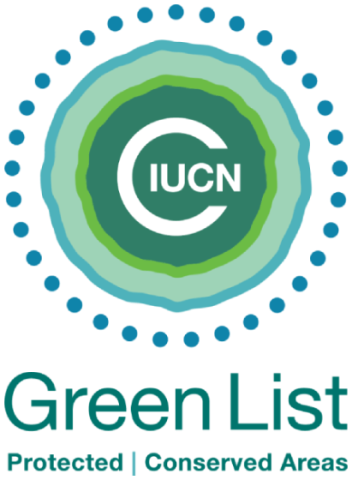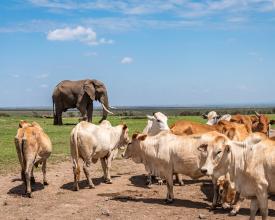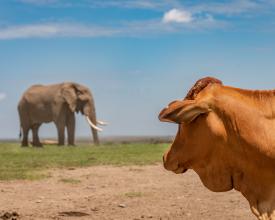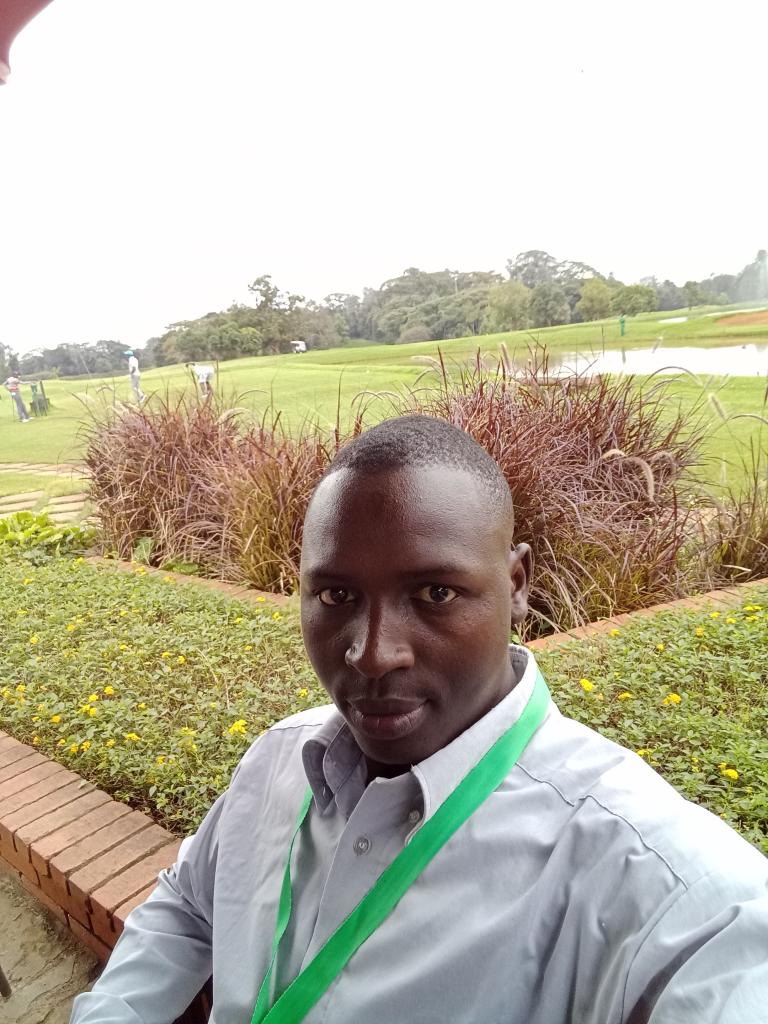
Intégrer l'élevage et la faune sauvage pour réduire la dégradation des sols, améliorer la biodiversité et la conservation

Ol Pejeta (OPC) est une réserve privée à but non lucratif, une zone protégée enregistrée et inscrite sur la liste verte de l'UICN. Elle abrite la plus grande population de rhinocéros noirs en danger critique d'extinction d'Afrique de l'Est, les deux derniers rhinocéros blancs du Nord et d'autres espèces menacées. L'OPC se trouve dans le comté de Laikipia, où l'agriculture pluviale et l'élevage représentent plus de 75 % des revenus des ménages.
Cette initiative remet en question l'approche traditionnelle "soit l'un, soit l'autre" de la conservation, en démontrant les avantages de l'intégration de l'élevage et de la faune sauvage. Plutôt que de réserver des terres à la conservation, l'approche de la gestion durable des terres consiste à utiliser le bétail comme outil de gestion de l'habitat. Un pâturage soigneusement géré permet de maintenir la santé des terres de parcours et d'assurer leur productivité. Cette source de revenus supplémentaire apporte un revenu essentiel, qui est réinvesti dans la conservation et le développement communautaire - les services de vulgarisation améliorent les moyens de subsistance et la résilience. La solution fondée sur la nature offre un modèle de conservation dans les zones où la faune sauvage n'est généralement pas tolérée.
Contexte
Défis à relever
Les principales menaces pesant sur la biodiversité de la zone de conservation sont considérées dans le contexte de la zone environnante, où les défis environnementaux, sociaux et économiques sont interdépendants :
- Perte d'habitat due à l'empiètement du bétail. L'augmentation de la population humaine s'accompagne d'une augmentation de la demande de terres pour l'habitat. L'empiètement du bétail augmente le risque de conflit entre l'homme et la faune et contribue à la dégradation des terres, menaçant la faune et les moyens de subsistance de l'homme.
- Dépendance à l'égard de l'agriculture pluviale. Les pasteurs et les petits agriculteurs dépendent de la pluie. Avec le changement climatique, l'augmentation des périodes de sécheresse et l'irrégularité des précipitations ont réduit les pâturages et affecté la productivité des cultures.
- Des moyens de subsistance limités. Le bétail joue un rôle sociétal important qui est encore amplifié par la disponibilité limitée de moyens de subsistance alternatifs, en particulier pour les femmes et les jeunes.
Un défi économique spécifique pour la zone de conservation est d'assurer une base de revenus durable et diversifiée - particulièrement critique cette année avec l'impact du COVID.
Emplacement
Traiter
Résumé du processus
Le succès de la conservation et le bien-être des communautés sont inextricablement liés. C'est ce que reflètent les blocs de construction. Le bloc 1 (gestion durable et intégrée des terres) favorise la création d'habitats sains pour la faune et la flore sauvages dans la zone de conservation, tout en générant des revenus qui sont investis dans le développement des communautés. La démonstration de cette approche des meilleures pratiques en matière de gestion des terres et du bétail confère une légitimité à l'engagement avec les communautés locales sur les questions liées à l'élevage, comme le prévoit le bloc 2. Ce bloc complémentaire (gestion communautaire durable du bétail) soutient directement les moyens de subsistance des communautés tout en promouvant une gestion durable des ressources naturelles. Cela permet de faire face aux principales menaces qui pèsent sur la biodiversité et de soutenir la conservation.
Blocs de construction
Approche de la gestion durable et intégrée des terres productives
L'approche innovante de la gestion intégrée des terres a été mise en place par Ol Pejeta et d'autres conservatoires dans le comté de Laikipia, au Kenya. Il s'agit d'une solution fondée sur la nature qui permet de créer un habitat sain pour la faune et la flore sauvages et de générer des revenus qui peuvent être réinvestis dans la conservation et le développement communautaire. Cette approche est mise en œuvre depuis 2004, parallèlement à un programme de développement communautaire qui comprend des services de vulgarisation agricole.
Le bétail est intégré à la faune sauvage dans l'ensemble de la zone de conservation selon des schémas de pâturage soigneusement gérés qui reproduisent les anciens mouvements des vastes troupeaux d'ongulés qui parcouraient autrefois la terre. Au fur et à mesure que le bétail se déplace dans les pâturages, les herbes restent courtes et saines, ce qui favorise les espèces et les nouvelles pousses qui permettent aux herbivores sauvages de survivre. Le bétail est gardé dans des bomas mobiles pendant la nuit pour le protéger de la prédation. Cette concentration crée également des points chauds écologiques où le fumier fertilise les nouvelles pousses d'herbe. Les bomas sont déplacés tous les 1 à 14 jours, en fonction des conditions météorologiques.
Le bétail nourri à l'herbe est de grande qualité et demande des prix élevés. Ils sont vendus sous notre marque Conservation Beef, ce qui génère des revenus pour Ol Pejeta. Cette approche permet à la terre d'être productive et de fournir un habitat sain qui abrite un large éventail d'espèces sauvages. Elle permet également de partager les bénéfices de la conservation avec les communautés.
Facteurs favorables
- Une gestion rigoureuse - veiller à ce que le nombre de bovins atteigne le bon équilibre entre la gestion des pâturages, la productivité et un habitat sain pour la faune et la flore.
- Engagement de la communauté - établir des relations de confiance solides avec la communauté pour soutenir l'approche.
- Gestion adaptative - surveillance continue de l'habitat, des interactions avec la faune et des densités de bétail, afin d'élaborer des stratégies d'adaptation si nécessaire.
Leçon apprise
- Suivi rigoureux - veiller à ce que les modes de pâturage et l'intensité soient soigneusement gérés afin de préserver l'habitat et de gérer les interactions avec la faune.
- Rotation des boma - comprendre quand déplacer les bomas mobiles pour le bétail, car cela dépend des conditions météorologiques. Par exemple, en période de sécheresse, les bomas peuvent rester sur place pendant 14 jours, contre 1 à 3 jours par temps humide.
- Liens avec le marché - il est important de créer des réseaux solides tout au long de la chaîne d'approvisionnement, afin de s'assurer que les produits atteignent le marché et que la volatilité des prix est gérée.
- Engagement de la communauté - importance de relations solides avec la communauté pour qu'elle s'engage dans l'initiative et qu'elle soutienne l'approche en général.
Promouvoir une gestion durable de l'élevage pour soutenir les moyens de subsistance et la conservation
L'élevage joue un rôle social et économique essentiel à Laikipia - plus de 50 % des terres sont consacrées à l'élevage. Ce projet vise à aider les communautés rurales locales à accroître la productivité du bétail tout en réduisant les dommages causés à l'environnement. L'approche soutient les moyens de subsistance et s'attaque aux principales menaces qui pèsent sur la biodiversité.
Les services de vulgarisation en matière d'élevage améliorent les compétences et les connaissances dans tous les aspects de l'élevage et de la gestion des ressources naturelles. Les services d'insémination artificielle sont fournis à des prix abordables afin d'améliorer la qualité du bétail et de pouvoir exiger des prix plus élevés. La formation et le soutien sont assurés dans les domaines suivants
- L'élevage - gestion des maladies du bétail, soins de santé, administration de médicaments pour prévenir les maladies.
- Gestion des ressources - gestion de l'eau et des terres, y compris les meilleures pratiques de gestion des pâturages pour soutenir le bétail et réduire la dégradation des terres.
- Micro-entreprise alternative - destinée aux femmes et aux jeunes, aide à la création d'entreprises telles que l'aviculture et l'apiculture.
Les agriculteurs formés sont encouragés à partager leurs connaissances et leurs compétences avec les autres membres de la communauté. Cette approche permet d'atteindre un plus grand nombre de personnes. Les moyens de subsistance sont améliorés et le soutien à la conservation est renforcé grâce au partage des bénéfices.
Facteurs favorables
- Engagement communautaire - établir des relations solides avec les communautés locales pour qu'elles s'engagent dans l'initiative et s'assurent que les services répondent à leurs besoins.
- Conception axée sur les besoins - veiller à ce que les services de vulgarisation soient conçus de manière à répondre aux besoins des communautés pastorales et à être importants pour elles.
Leçon apprise
- Engagement de confiance avec les communautés - il est important d'établir des relations solides avec un dialogue régulier, d'être à l'écoute de leurs besoins et de leur offrir des possibilités de retour d'information.
- Prendre en compte l'ensemble de la chaîne de valeur - il est nécessaire de comprendre l'ensemble de la chaîne, les lacunes éventuelles et la manière de les combler. Par exemple, l'accès aux médicaments est apparu comme un problème car l'approvisionnement actuel était très éloigné et inabordable. Nous avons aidé les communautés à accéder au microfinancement et facilité l'accès aux médicaments au niveau local et à un prix équitable.
- Promouvoir la collaboration et le partage des connaissances - encourager les groupes d'agriculteurs à travailler ensemble, à partager les acquis de la formation avec leurs pairs et leurs voisins. Cette action collective a également permis d'accroître le pouvoir d'achat grâce à des économies d'échelle.
Impacts
Environnement :
- Amélioration de l'habitat pour la faune. La solution a permis de transformer un ranch de bétail en une réserve naturelle de premier plan. Depuis sa mise en œuvre, la qualité des pâturages s'est améliorée et des augmentations significatives des populations d'espèces ont été constatées. Ol Pejeta abrite désormais le plus grand nombre de rhinocéros noirs d'Afrique de l'Est, en danger critique d'extinction, ainsi que de nombreuses autres espècesmenacées. Une population de proies en bonne santé soutient également certaines des densités de prédateurs les plus élevées enregistrées en Afrique de l'Est.
Social :
- Autonomisation des communautés. L'agriculture est le secteur prédominant pour les communautés rurales entourant Ol Pejeta. Le bétail a une importance à la fois économique et culturelle. Nous avons présenté un modèle de gestion des terres qui est productif et écologiquement durable, démontrant que l'élevage n'a pas besoin de se faire au détriment de la faune sauvage.
Sur le plan économique :
- Investissement dans la conservation et le développement communautaire. L'élevage et l'agriculture génèrent des revenus nets de 500 000 à 1 million de dollars par an. Il s'agit d'une source de revenus essentielle pour Ol Pejeta, qui lui permet d'investir dans la conservation et le développement communautaire.
- Amélioration des moyens de subsistance des communautés. L'achat de bétail communautaire et les services d'insémination artificielle ont augmenté les revenus des communautés. Les services complémentaires de vulgarisation en matière d'élevage ont permis d'accroître la productivité et d'améliorer la compréhension de la gestion des ressources naturelles.
Bénéficiaires
- Les quelque 700 employés d'Ol Pejeta qui sont en partie financés par les revenus que l'élevage et l'agriculture apportent à la réserve.
- Les quelque 35 000 personnes des 20 communautés pastorales et agricoles qui entourent la réserve.
Objectifs de développement durable
Histoire
Les revenus générés par les activités d'élevage et d'agriculture ont constitué une source essentielle de revenus pour le Conservatoire au cours du COVID-19. En temps normal, les revenus de la réserve se répartissent de manière égale entre trois sources : le tourisme, la philanthropie et les subventions, ainsi que l'élevage et l'agriculture. Avec l'arrêt effectif du tourisme international et national, Ol Pejeta a dû faire face à un déficit d'exploitation d'environ 2 millions de dollars. Nous avons été contraints de prendre d'importantes mesures de réduction des coûts, y compris des licenciements, des réductions de salaire et une concentration sur les coûts de fonctionnement critiques uniquement. Notre record de zéro braconnage était menacé. Même après ces réductions, nous étions confrontés à une crise existentielle. Le secteur de l'élevage et de l'agriculture nous a aidés à rester opérationnels grâce à la vente de notre "bœuf de conservation", à la production de fourrage et au foin. L'année dernière, elle a produit une contribution nette record d'un peu moins d'un million d'USD pour la zone de conservation, soit près du double des années précédentes. Sans ce revenu, un grand nombre d'employés auraient probablement dû être licenciés et les programmes de conservation et communautaires auraient été gravement compromis.
Nous sommes fiers de pouvoir gérer une entreprise d'élevage commercialement rentable dans une réserve où vivent des lions et de grands troupeaux d'herbivores sauvages - un exploit que beaucoup jugeraient impossible ! Cette approche repose sur notre philosophie qui consiste à travailler avec la nature plutôt que contre elle.
Nous pensons que cette approche innovante de la régénération des terres et de l'initiative climatiquement intelligente ne peut fonctionner que si elle est rentable pour le producteur ou l'exploitant, et nous entendons continuer à le prouver.







